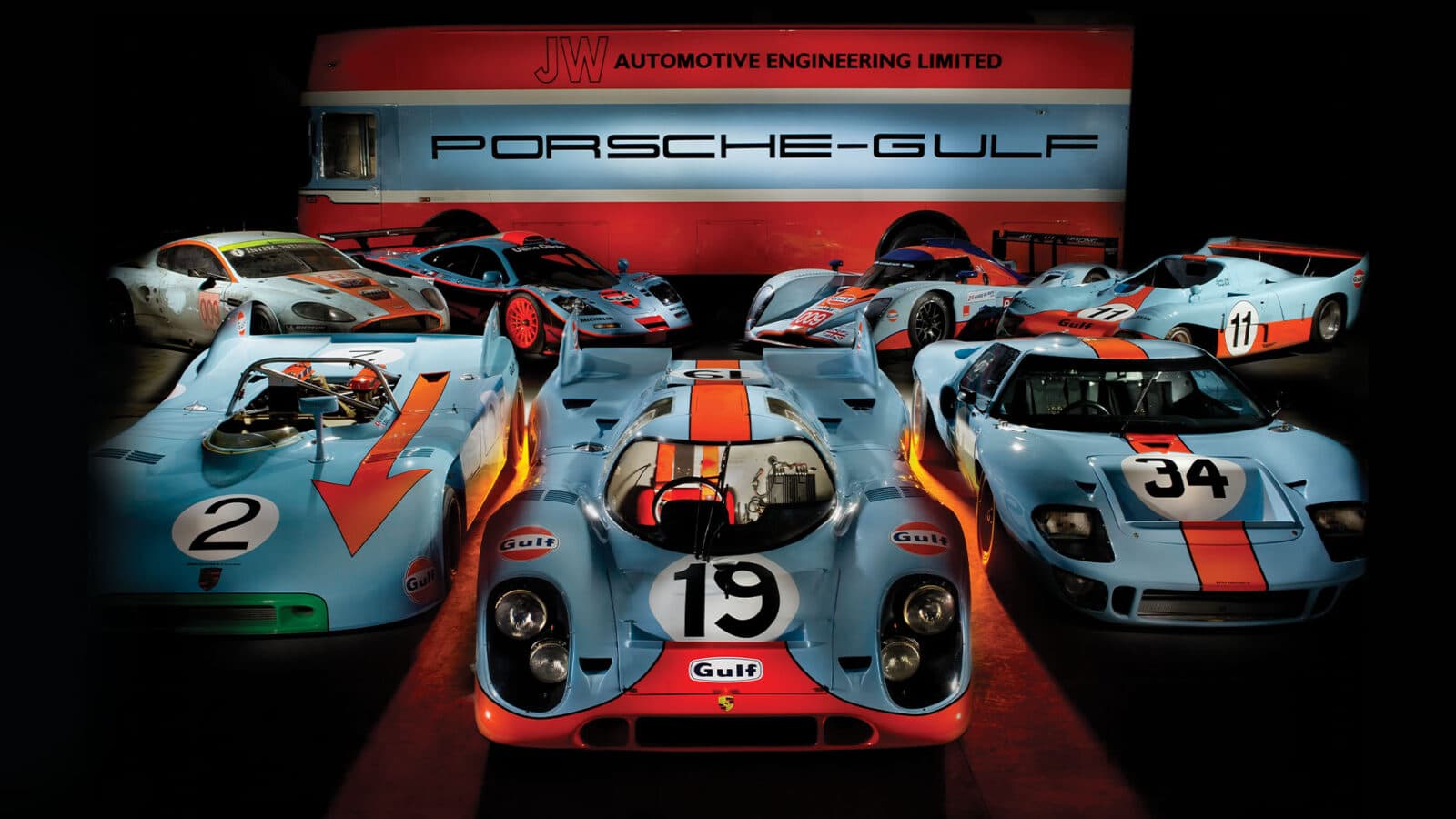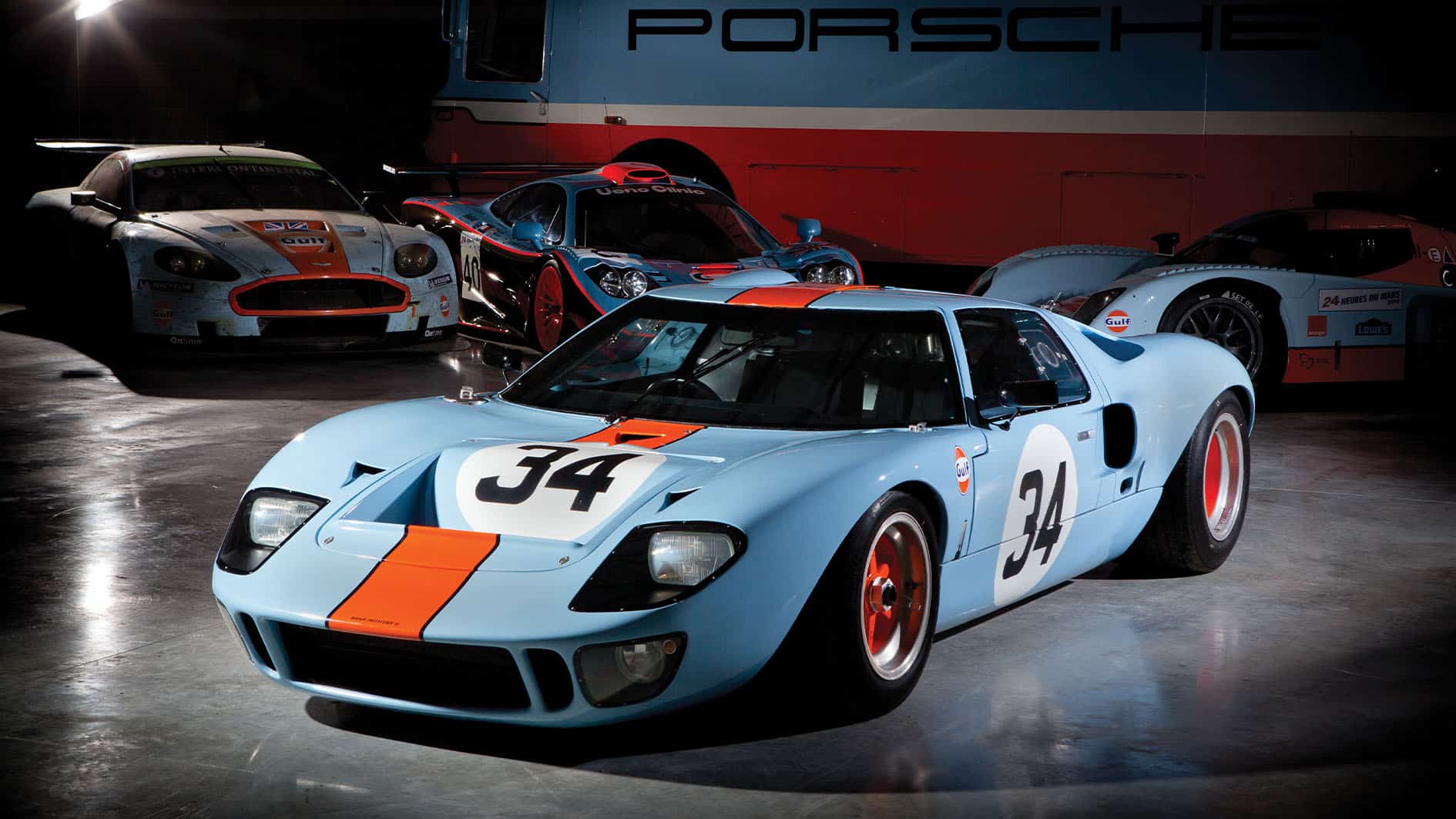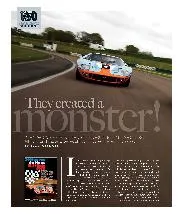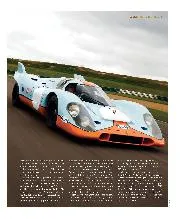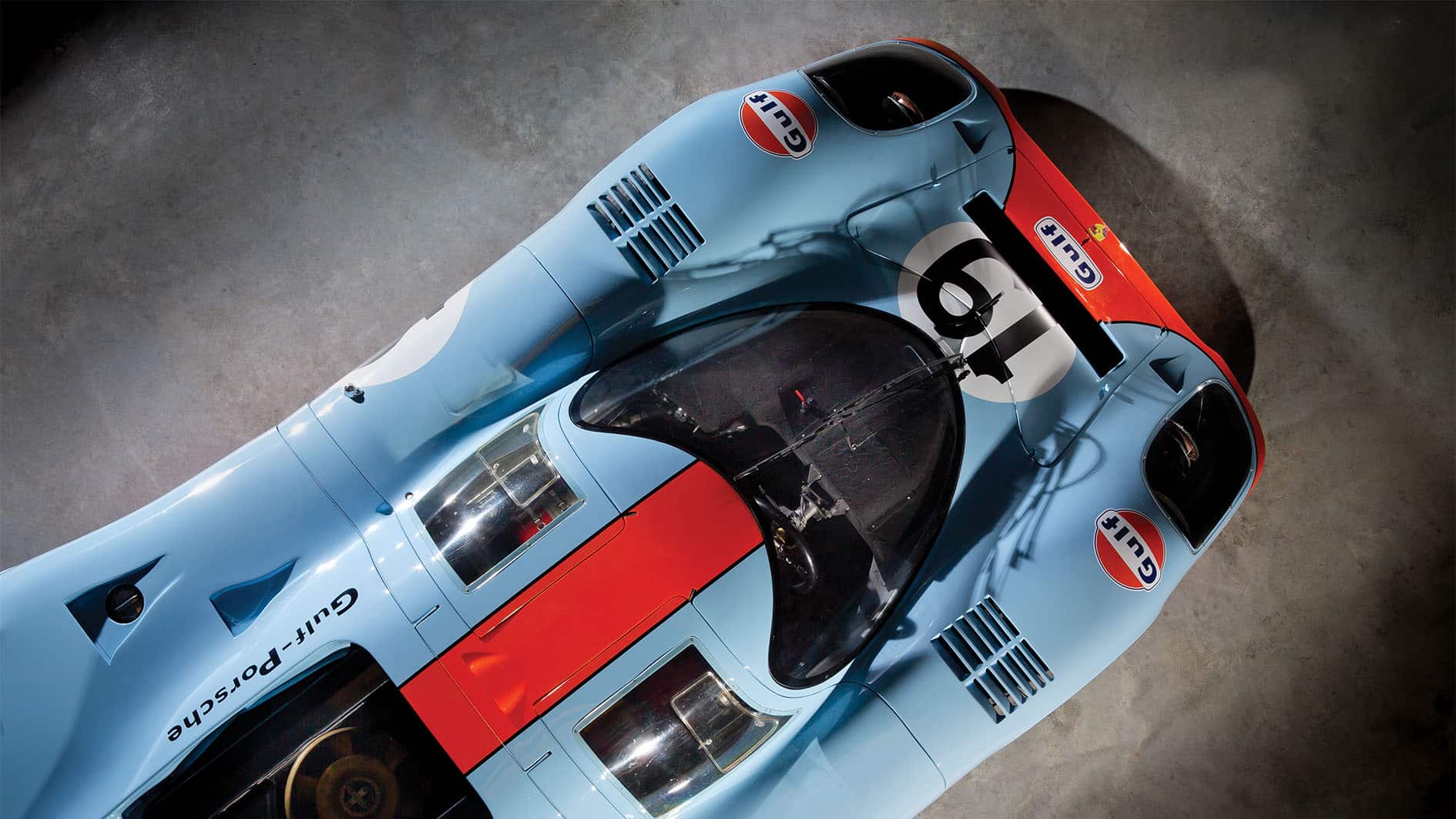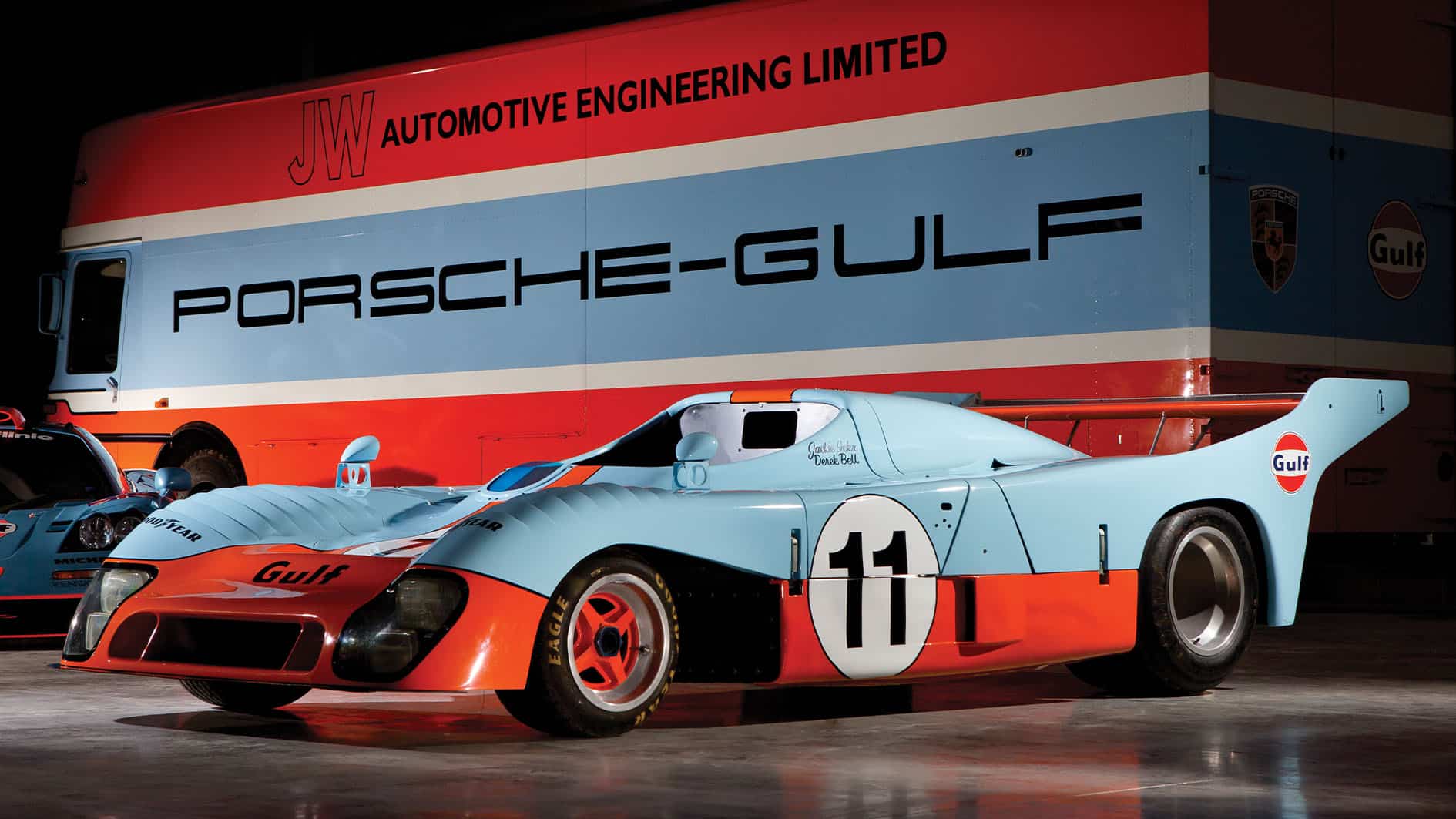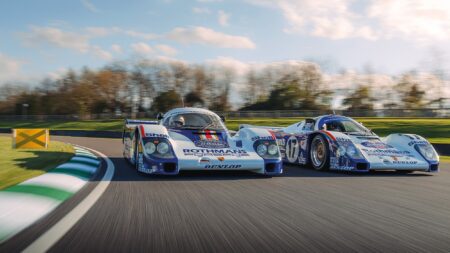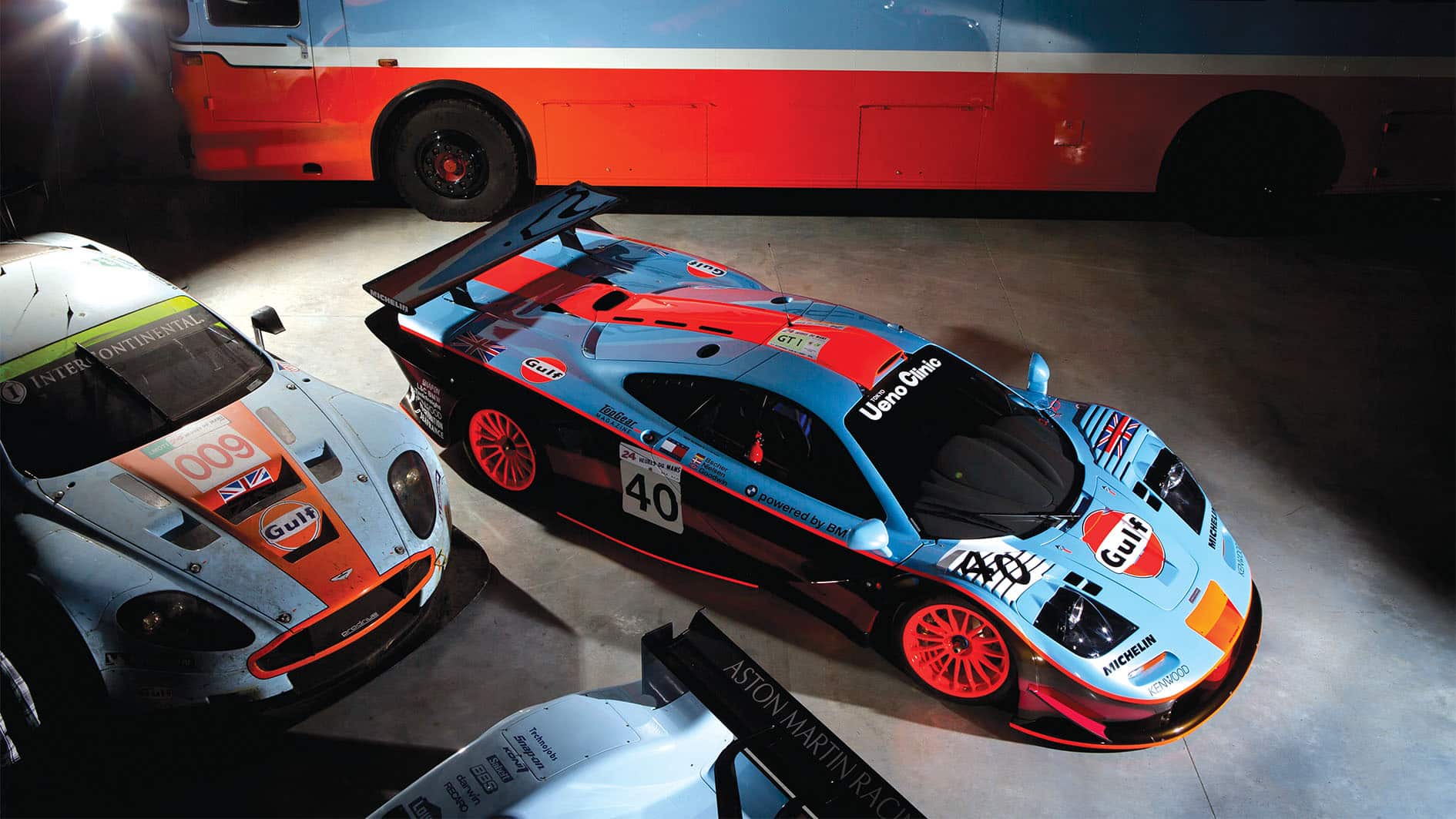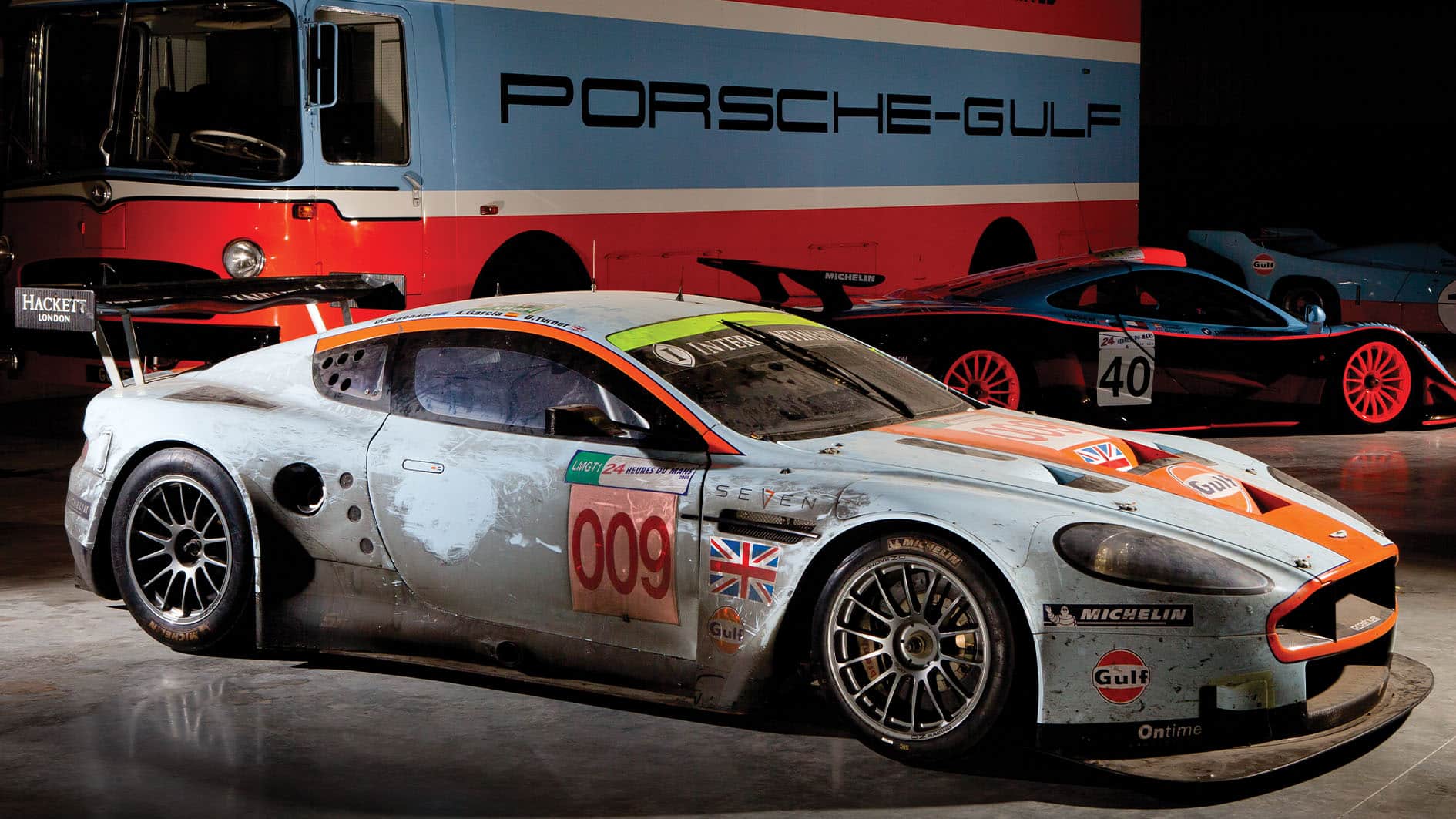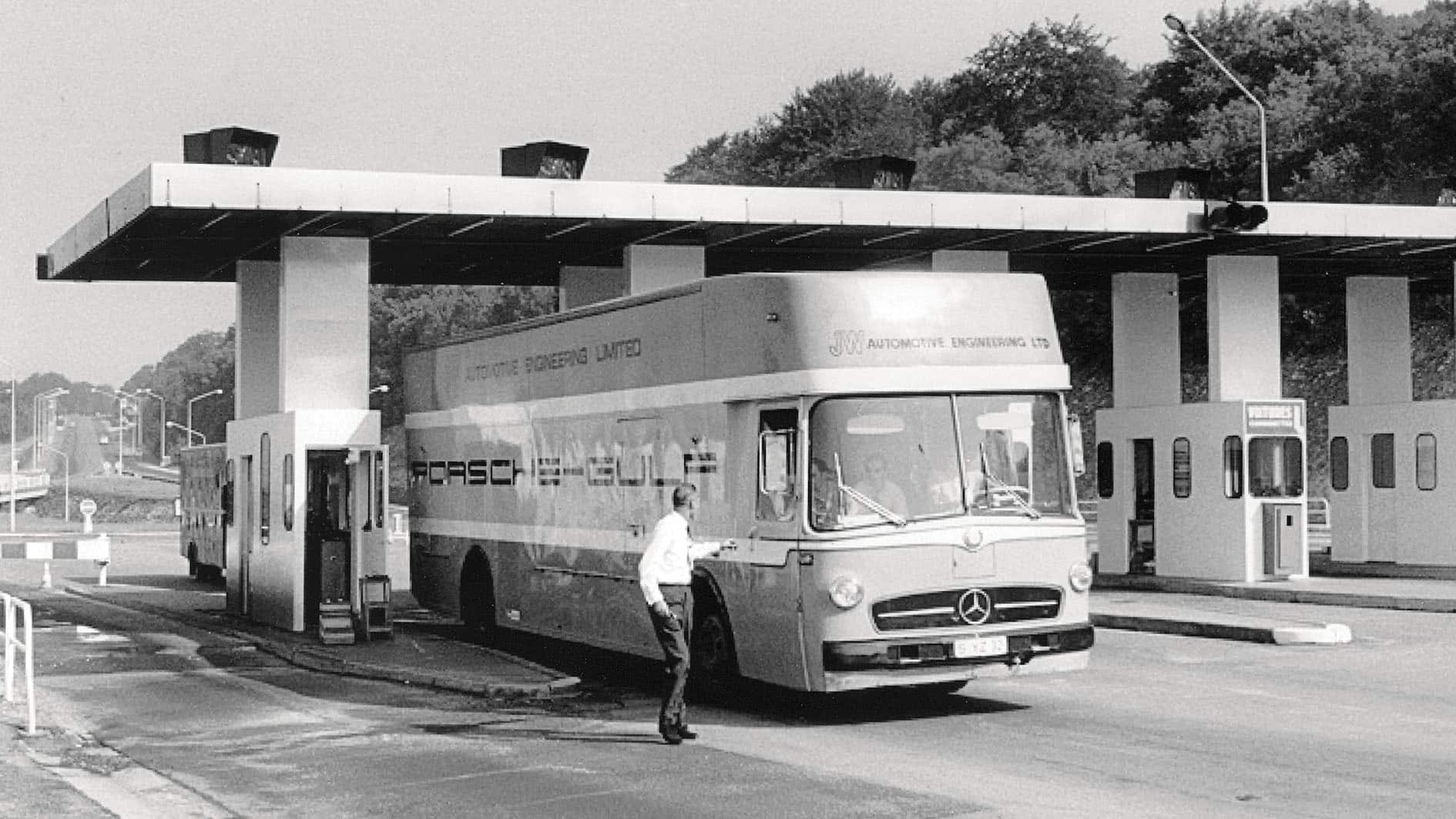Back in the 1965 race, one of the entries was a private Rob Walker car. Driven by Bob Bondurant and Umberto Maglioli, it managed barely two hours of racing before succumbing to head gasket failure. It was returned to Ford Advanced Vehicles, dismantled and forgotten about for two years.
For any normal racing car that would be time enough to render it obsolete, but not the GT40. New rules for 1968 mandated a 25-car run for any wishing to compete with an engine of more than three litres and that played perfectly into Ford’s hands. While in time younger, purpose-built machines like the Porsche 917 would spoil the party, in the short term there was hay to be made.
The old Rob Walker car was recreated in Gulf colours, given a new identity (P/1084) and sent out to race. To be fair it was its sister P/1075 that captured all the headlines, winning Le Mans in both 1968 and the near photo-finish in 1969, but P/1084 was good enough for fourth at Spa, driven by David Hobbs and the great Paul Hawkins.
Its greater significance here is as the first member of the Gulf Collection, the car that inspired Roald Goethe as a child and a machine that set the ball rolling for the collection as it is today.
*
2009 Lola-Aston Martin LMP1
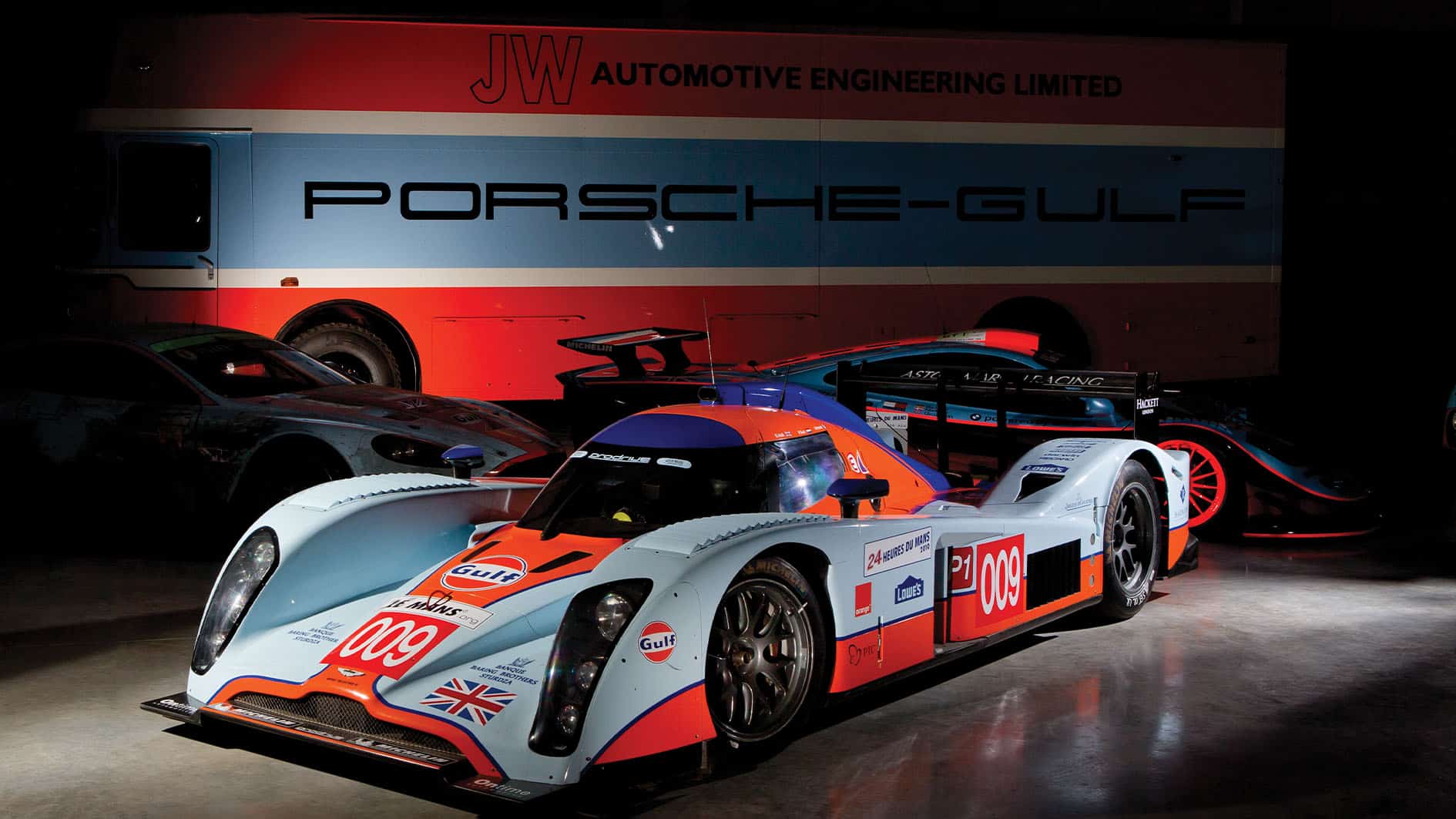
Like so many of its forebears down the years, Aston Martin’s first full prototype since the AMR1, some 20 years earlier, was destined to earn its keep as a best-of-the-rest car. However, unlike those other Astons that promised much and delivered little, the LMP1 prototype did as well as could conceivably be expected, usually proving the fastest petrol-powered prototype in the field.
Unfortunately when that field turned up at places like Le Mans, it also included diesel prototypes with rules so heavily stacked in their favour there was nothing any petrol car could do other than to hope that they broke. But with works Audi and Peugeot teams investing the kind of money that only vast global multinationals can muster, failures were the last thing that tended to happen.
Three LMPls were made, Lola building the cars, Prodrive running them and Aston Martin providing its road-based 6-litre V12. Sadly the cars are probably best remembered for the unseemly spat between Lola and Aston over its naming: Aston wanted it called the DBR1-2 to evoke the memory of the only Aston ever to win a top-level championship, Lola pointing out that the car was, in fact, an Aston-powered Lola. It’s a shame because, unfairly favoured diesel opposition aside, it was usually the class of the field, winning the 2009 LMS series outright against only occasional diesel opposition.
At Le Mans in 2009 two LMP1s qualified first and second in the unofficial petrol-powered contest, one car running as high as third outright until dropping out of contention after an altercation with another competitor, the other coming home fourth behind two Peugeots and an Audi. It was Aston’s best result at the race in half a century. At Sebring the following year, one actually made the podium in third place behind two Peugeots.
The collection’s car is the second chassis, usually raced by Darren Turner and recording a best result of second place at the 2009 Nurburgring 1000Kms.
*
1971 Porsche 908/3
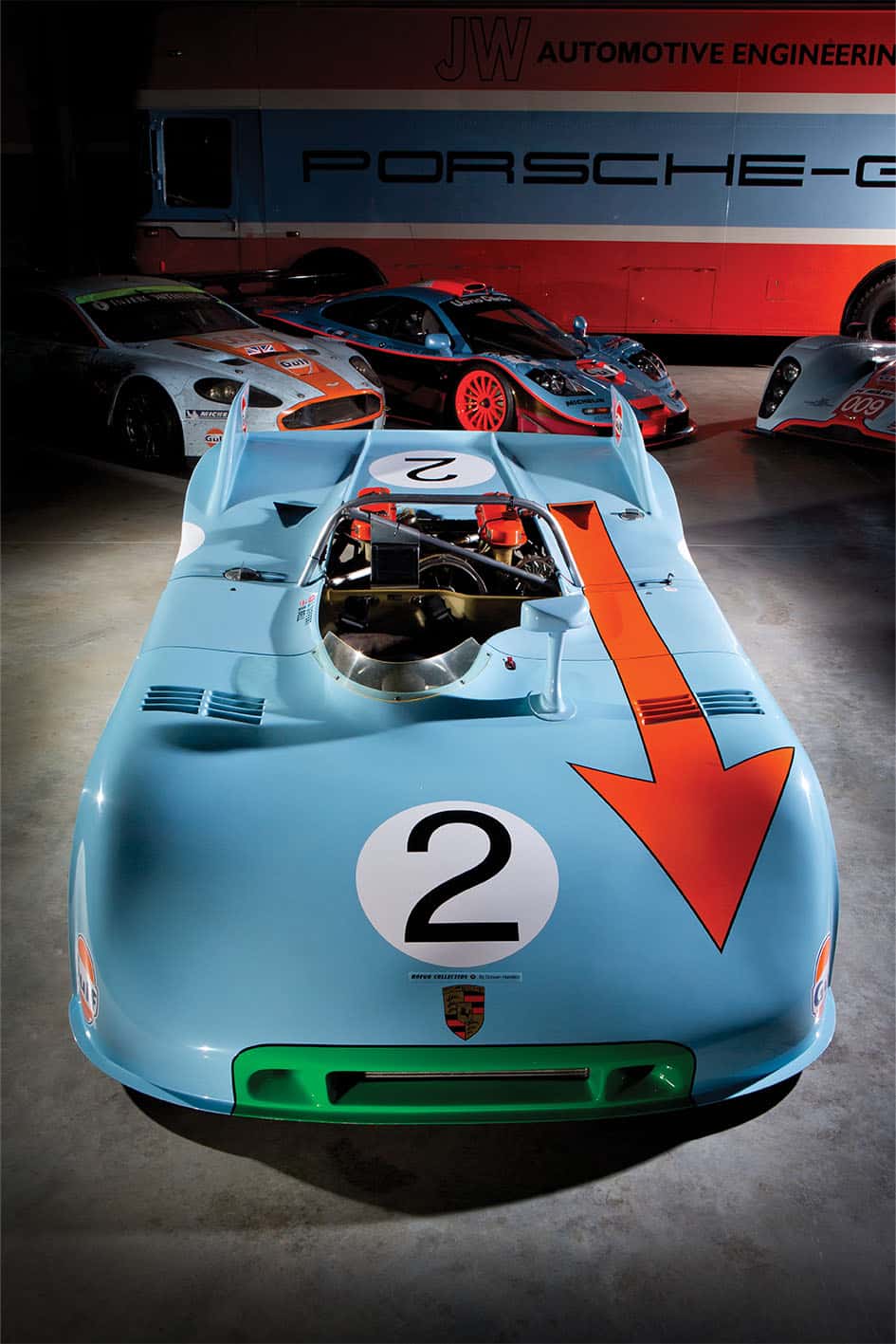
What better measure of a car’s brilliance can there be than to know that of all the cars he raced in his long career, the Porsche 908/3 is Brian Redman’s favourite? “It’s a jewel of a car,” he says. You look at that non-existent wheelbase and think it must be twitchy as hell but nothing could be further from the truth. It was fast, friendly and with that torquey flat-eight motor, wide tyres and no downforce, it was an absolute dream to drive on the Targa.”
